Social media platforms have transcended being mere communication tools; they are now bustling marketplaces, brand showcases, and customer engagement hubs. In this landscape, success is not defined by the number of likes, shares, or followers alone. It’s about discerning the deeper impact of your efforts, optimizing strategies, and ensuring your digital endeavors align seamlessly with your business objectives.
But fear not; this is not a journey shrouded in complexity. Our blog is designed to unravel the intricacies of social media KPIs in a user-friendly and insightful manner. We’ll delve into the significance of each KPI, exploring how they function as the compass guiding your social media ship through uncharted digital waters.
From the foundational metrics that measure engagement and reach to the metrics that gauge sentiment and customer satisfaction, we’ll traverse the entire spectrum. Together, we’ll navigate the realm of click-through rates, audience growth rates, review ratings, and much more. Each KPI has a unique tale to tell, a story of how your content resonates, how your brand stands out, and how your audience interacts with your offerings.
What are Social Media KPI?
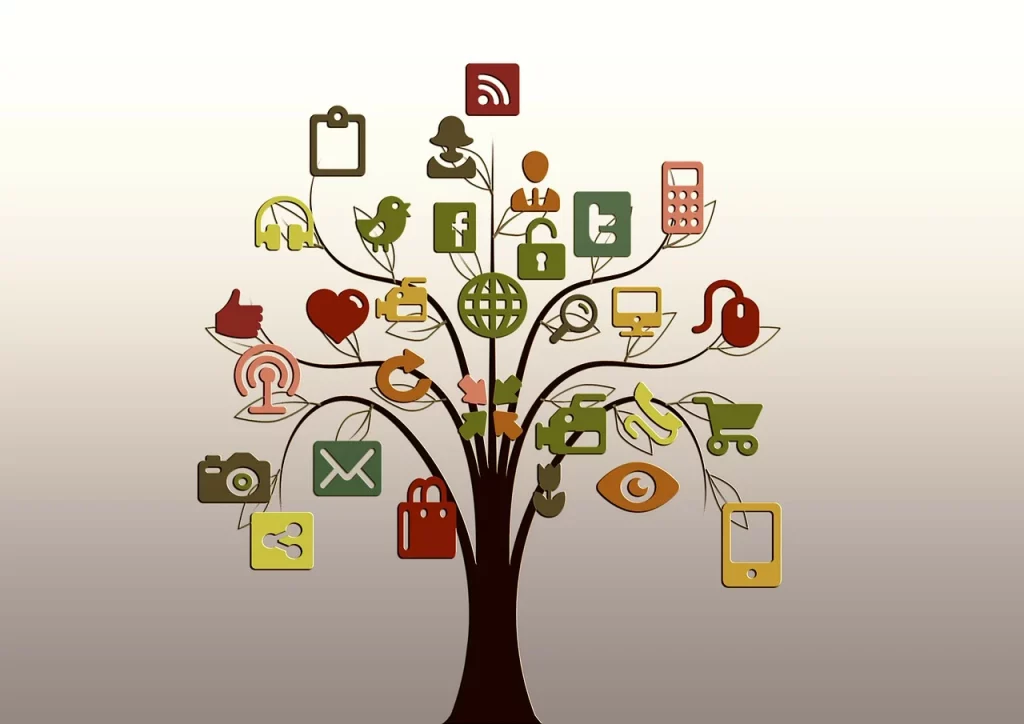
Social media Key Performance Indicators (KPIs) play a pivotal role in providing you with a comprehensive toolkit to effectively gauge, dissect, and enhance your social media endeavors with a well-informed approach. These metrics serve as navigational instruments that guide you through the intricate landscape of social platforms, ensuring that your actions are not only purposeful but also aligned with the overarching goals of your business within the digital realm.
Benefits of Social Media KPIs:
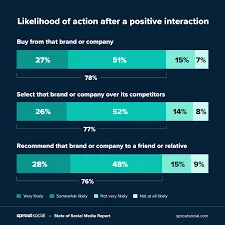
1. Measure with Precision: Social media KPIs act as your reliable yardstick, offering precise measurements that cut through the noise of vanity metrics. They present you with tangible data that showcases your performance, painting a clear picture of how your efforts are translating into concrete outcomes.
2. Analyze Deeper Insights: Beyond surface-level observations, KPIs enable you to delve deeper into the nuances of your social media initiatives. By dissecting these metrics, you gain insights into what strategies are resonating with your audience, allowing you to replicate success and refine areas that need improvement.
3. Optimize with Precision: Armed with the insights from KPI analysis, you can optimize your social media strategy with surgical precision. This optimization process isn’t reliant on guesswork but rather guided by evidence-based decisions rooted in real-time data.
4. Strategic Alignment: Social media KPIs serve as a compass, steering your efforts toward the strategic direction that you’ve set for your business. Whether your objectives are centered around brand awareness, lead generation, customer engagement, or sales conversion, these metrics help ensure that your actions are purposeful and on point.
5. Evidence-Based Decision-Making: The foundation of your decision-making process shifts from gut feelings to data-driven conclusions. With KPIs at your disposal, you can confidently make informed choices that are backed by tangible evidence of what’s working and what’s not.
6. Agility and Adaptation: Social media landscapes are dynamic, with trends and user behaviors evolving rapidly. KPIs empower you to remain agile by promptly identifying shifts and trends in performance, allowing you to adapt your strategies to stay ahead of the curve.
7. Efficient Resource Allocation: Instead of spreading your efforts thin across various metrics, KPIs enable you to allocate your resources—time, budget, and manpower—where they will yield the highest returns. This optimization enhances the efficiency of your social media campaigns.
8. Showcase ROI and Value: With KPIs, you can accurately quantify the return on investment (ROI) of your social media endeavors. Whether it’s increased revenue, lead generation, or improved customer satisfaction, KPIs highlight the value your efforts are generating for your business.
9. Collaboration and Communication: KPIs serve as a common language when collaborating with team members, stakeholders, and clients. They provide a concise and transparent way to communicate the impact and progress of your social media initiatives.
10. Continuous Iteration: Through consistent analysis of KPIs, you initiate a cycle of continuous improvement. By learning from your data, you can refine your tactics, experiment with new approaches, and consistently raise the bar for your social media performance.
Top 16 Social Media KPIs:
1. Impressions: A Canvas of Encounters
Imagine impressions as the delicate brushstrokes that create a vibrant canvas of encounters. With each impression, your content graces the screens of users, whether it’s an original post or a shared creation. What makes this metric truly remarkable is its ability to capture multiple views by the same user, providing a multidimensional perspective of your brand’s digital footprint.
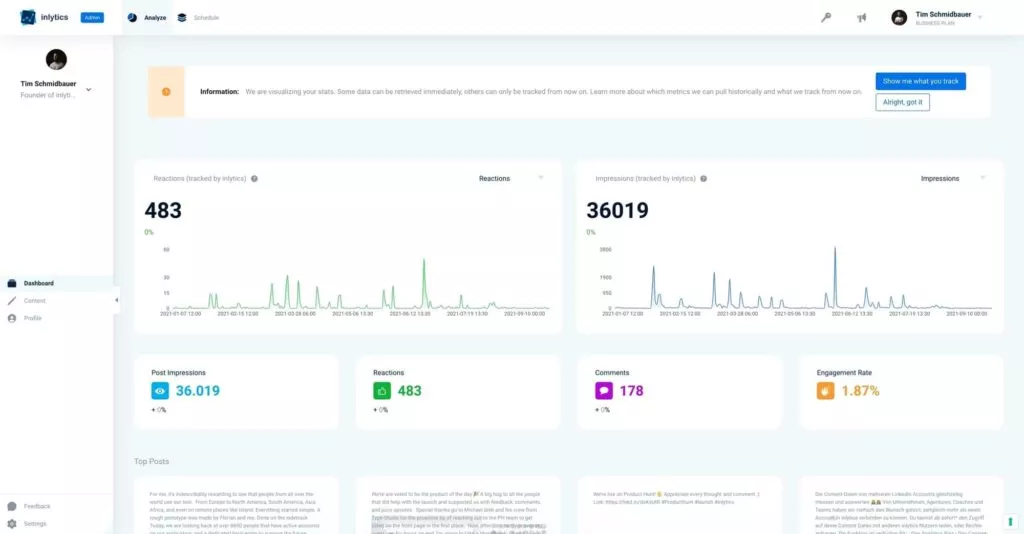
Why It Matters: Visualize a LinkedIn post resonating across the platform, leaving an indelible mark with countless impressions. Yet, beyond the numerical value lies a deeper narrative. Impressions signify more than mere reach—they embody the potential for amplified recognition. This promise of recognition translates into a surge of followers and heightened engagement, creating a fertile ground for nurturing enduring relationships with your audience.
2. Video Views: Narratives in Motion
Video views are the vibrant brushstrokes that craft narratives in motion, captivating your audience’s senses. However, the definition of a “view” varies among social media platforms. For instance, Facebook acknowledges a view after three seconds of viewing, while YouTube commences its count as soon as a video ignites.
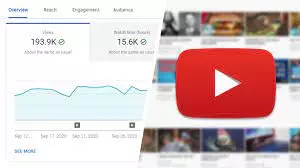
Envision a YouTube video amassing millions of views—a testament to its magnetic essence, harmonizing seamlessly with your audience’s preferences. Yet, these views extend beyond engagement; they serve as a compass guiding your content strategy. They guide you toward creating videos that not only resonate with your audience’s interests but also evoke a profound emotional connection.
3. Post Reach: Extending Echoes
Post reach transcends the boundaries of mere impressions, echoing far beyond your immediate followers. This metric unveils the number of unique users who’ve encountered your post, counting each user only once, irrespective of multiple views.
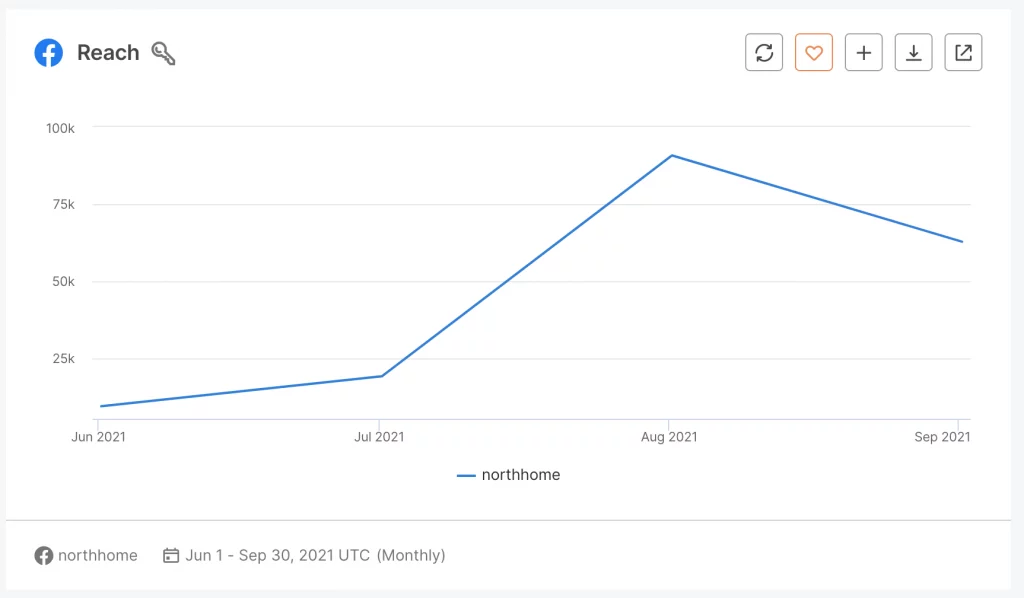
Picture a Facebook post rippling across countless screens like the gentle echoes of a melody. These ripples denote your content’s potential to transcend immediate circles, kindling curiosity among a diverse array of individuals. Post reach matters as it unveils the breadth of resonance your content enjoys and hints at the uncharted possibilities for expanding your brand’s influence.
4. Follower Count: Understanding Your Audience
Follower count is a measure of the number of users who have chosen to connect with and receive updates from your social media profile. It encompasses both individual users and businesses or brands that have shown an interest in your content.
The number of followers you have can fluctuate over time. It can increase as new people discover and decide to follow your profile. Conversely, it can decrease if individuals opt to unfollow for various reasons.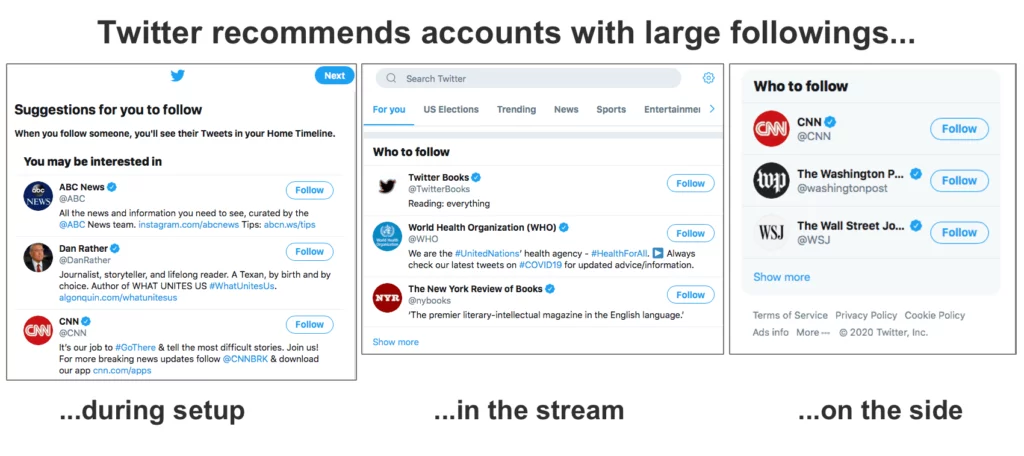
Interestingly, a decline in follower count doesn’t necessarily indicate a negative outcome. In fact, it can signify a positive shift in your social media strategy. It may suggest that your content is becoming more focused and resonating with a specific and engaged audience.
Why It Matters: Consider the analogy of a friendly gathering or a community event. The number of attendees provides a rough idea of popularity, but it’s the interactions and connections that truly matter. Similarly, while follower count showcases the extent of your reach, it goes beyond mere popularity. It’s a reflection of the depth of your audience’s interest and their willingness to stay connected to your content. This metric is an indicator of the quality of your brand’s engagement and its ability to foster meaningful relationships with its followers.
5. Audience Growth Rate: Tracking Your Brand’s Popularity
Audience growth rate serves as a metric to gauge the pace at which your social media following is expanding or contracting. This dynamic metric is presented as a percentage change, calculated by comparing the number of followers at the end of a specific period with the number at the start of that period.
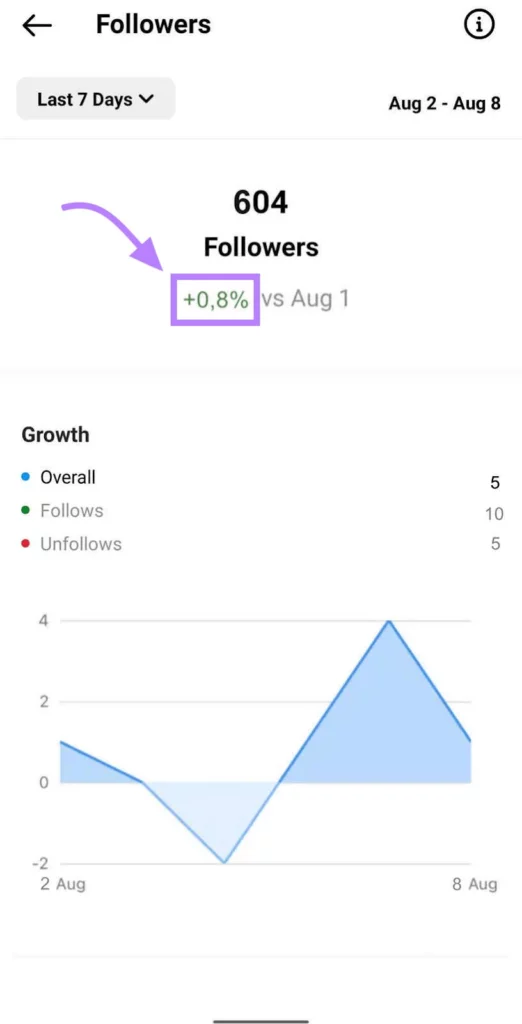
The resulting percentage change unveils the momentum of your brand’s digital presence—whether it’s experiencing rapid growth, moderate progress, or even a decline.
Why It Matters: Imagine observing the rise and fall of a musical crescendo. Similarly, the audience growth rate offers insight into the tempo of your brand’s journey through the digital landscape. When this rate increases rapidly, it can signal the effectiveness of your social media strategy in attracting new followers. On the contrary, a sluggish growth rate might hint at the need for adjustments to your social media calendar, content approach, or engagement tactics. This metric serves as an invaluable compass to navigate your brand’s online presence.
6. Reactions: Simple Signs of Interest
Reactions are akin to a virtual nod of approval or appreciation. These are manifested when users engage with your content by clicking buttons like “Like,” “Love,” “Celebrate,” or their equivalents across different platforms. The range of reaction options may vary from platform to platform.
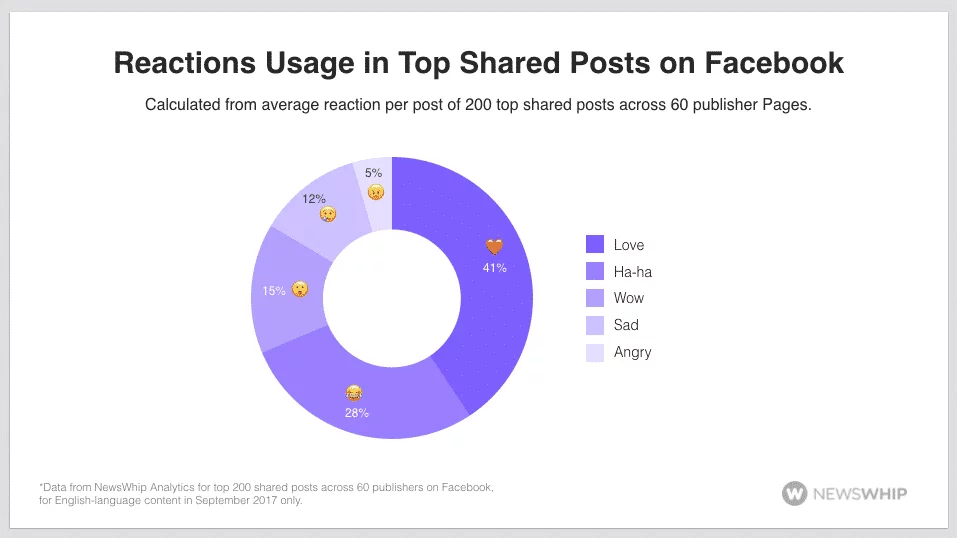
For instance, Facebook offers a spectrum of reactions to choose from, while Instagram places a primary focus on the classic “Like.”
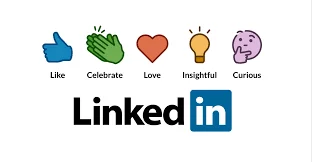
Why Reactions Are Important: Think of reactions as the equivalent of an audience’s applause at the end of a captivating performance. A high number of reactions indicates that your content resonates with your audience and strikes a chord with their preferences. This metric serves as a litmus test for the effectiveness of your content strategy, helping you fine-tune your approach to create content that consistently resonates with your audience.
7. Comments: Conversations That Matter
Comments are the written conversations that unfold beneath your social media posts. Users have the opportunity to express their thoughts, opinions, and reactions to your content. They can engage with the original post or respond to other comments, creating a dynamic and interactive discussion.
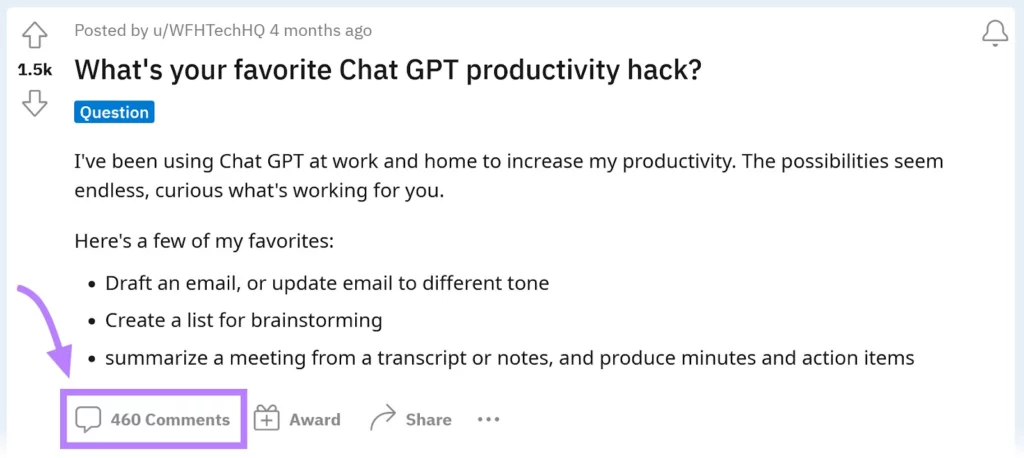
Why Comments Are Important: Imagine a lively group discussion following a thought-provoking talk. Comments are the digital equivalent of these engaging conversations. Their presence signifies a deeper level of interaction and engagement with your content. A higher number of comments not only elevates visibility but also indicates that your content has sparked meaningful discussions. Monitoring comments provides valuable insights into your audience’s preferences and viewpoints, aiding in refining your social media management strategy.
8. Shares: Spreading the Word
Shares are the digital manifestation of a recommendation. When users resonate with your content, they might choose to share it on their own social media profiles. This action extends the reach of your content to a wider audience beyond your immediate followers.
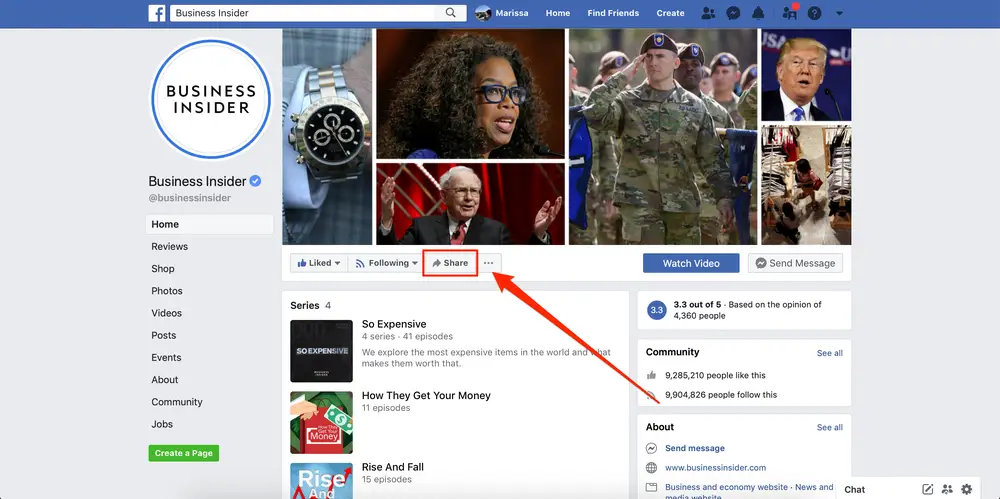
Why Shares Are Important: Think of shares as a ripple effect in a pond. A high number of shares amplify your content’s visibility and reach, akin to a referral from a satisfied customer. When users share your content, they vouch for its quality and relevance. This endorsement not only increases your social media visibility but also potentially attracts new followers who trust the recommendation of their peers.
9. Saves: Content Worth Keeping
Saves indicate that your content has made a lasting impression on users. Similar to bookmarking a favorite page in a book, users save your posts to revisit them at a later time. This action demonstrates the perceived value and relevance of your content.

Why Saves Are Important: Consider saves as a mark of distinction. Users are essentially setting aside your content for future reference, highlighting its worthiness of a second look. The act of saving reflects the resonance of your content and its ability to provide enduring value to your audience. This metric is a testament to the relevance and enduring nature of your content.
10. Average Engagement Rate: Measuring Connection
The average engagement rate serves as a comprehensive measure of how well your content connects with your audience. Typically expressed as a percentage, it quantifies the level of interaction your content garners relative to the total number of followers you have.
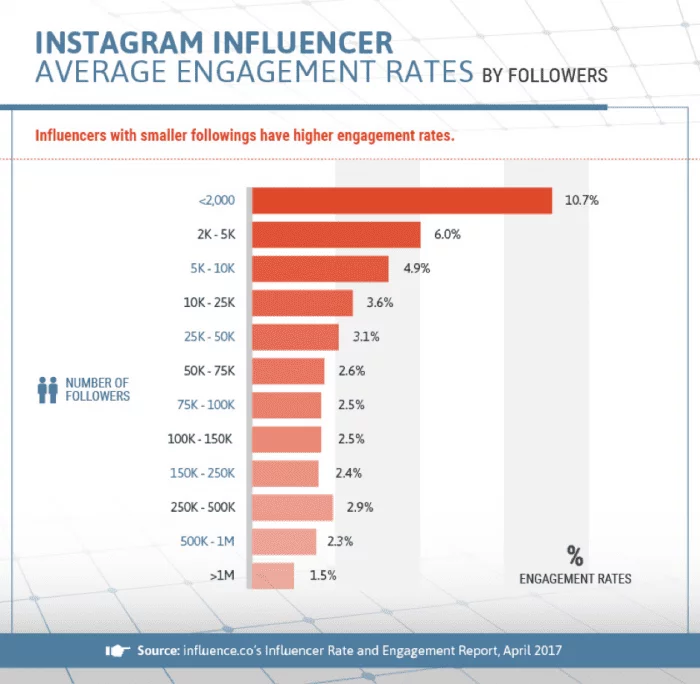
Why Average Engagement Rate Is Important: Think of the average engagement rate as the pulse of your social media strategy. A high engagement rate indicates a thriving connection between your content and your audience. It signifies that your content resonates deeply and triggers interactions, akin to stimulating conversations among friends. This metric underlines the relevance and quality of your social media content, indicating that your brand is successfully fostering engagement and meaningful interactions.
11. Click-Through Rate: Guiding the Journey
Click-Through Rate (CTR) emerges as a guiding light, illuminating the path users traverse in the intricate web of interactions. This metric reveals the percentage of users who followed your content’s trail, leading them to a designated destination—typically a link. Beyond being a measure of advertisement effectiveness, CTR resonates even within the realm of unpaid social performance, speaking to the harmonious interplay between content and curiosity.

Calculating CTR involves the ratio of clicks to impressions, multiplied by 100 to yield a percentage. This formula serves as a compass, navigating the intersection of engagement and action, unearthing the impact of your content’s directional cues.
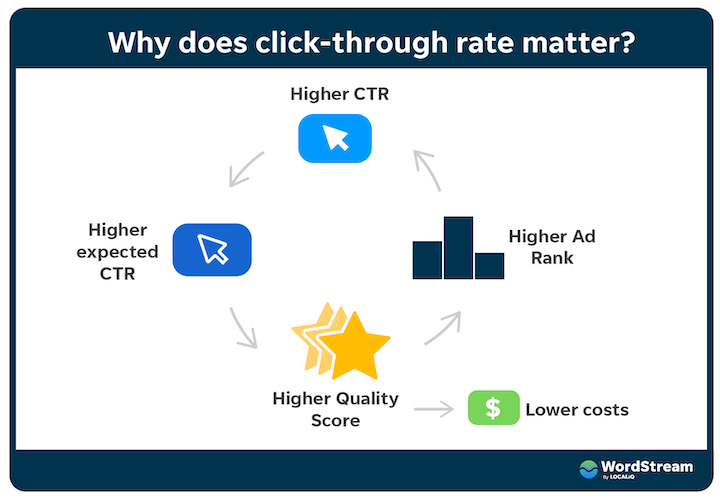
Why Click-Through Rate Matters: Picture CTR as a choreography of allure and navigation. It spotlights content that effectively guides users towards gated content, landing pages, and other strategic destinations. A robust CTR synchronizes the intrigue of your message with the curiosity of your audience, enticing them to journey along the path you’ve paved.
12. Conversion Rate: Echoes of Desired Outcomes
The Conversion Rate whispers the tale of achieved actions—those that align with your aspirations. Whether it’s signing up for a newsletter or completing a purchase, this metric unveils the percentage of users who transition from passive observers to active participants.
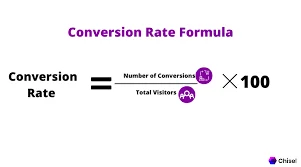
The mathematical melody behind this narrative involves dividing the number of conversions by the total users who clicked your content, and then multiplying by 100. These numbers encapsulate the story of content-driven metamorphosis, where mere viewers evolve into engaged contributors.
Why Conversion Rate Matters: Conversion Rate is a sonnet of success, articulating the seamless transformation from interaction to action. Each conversion serves as a musical note in the symphony of audience engagement, affirming your content’s power to inspire and lead to meaningful outcomes. It’s not merely about completing a form or making a purchase; it resonates as the echo of your content’s capacity to motivate and convert.
13. Review Ratings
Social media reviews act as a sounding board for customers to share their impressions about your product or service. Typically accompanied by a numerical rating, these reviews offer valuable insights.
Review ratings often come in the form of a scale ranging from one to five. Calculating an average rating provides a comprehensive quantification of customer satisfaction.
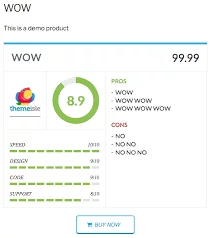
To compute the average rating, sum up all individual ratings and divide by the total number of reviews received.
Why Review Ratings Matter: Review ratings offer a direct channel for customers to voice their opinions, granting you access to firsthand feedback. This feedback not only provides insights into their level of satisfaction but also serves as a compass guiding you toward areas of improvement.
14. Customer Satisfaction Score
Your Customer Satisfaction (CSAT) score serves as a barometer of your customers’ contentment with your product, service, or overall experience.
To derive your social media CSAT score, conducting surveys or polls on social platforms can be effective. These surveys ask followers to rate their overall satisfaction with your offering on a scale from one to five, where one signifies “very unsatisfied,” and five denotes “very satisfied.”
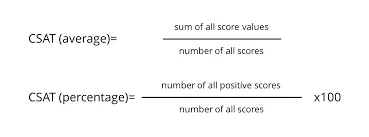
The CSAT score is calculated by dividing the number of satisfied customers (those who rate their satisfaction as four or five) by the total number of responses. This value is then multiplied by 100 to obtain a percentage.
Why Customer Satisfaction Score Matters: Your CSAT score essentially mirrors the perceived quality of your product or service from the vantage point of your customers. Tracking fluctuations in this score over time enables you to detect trends in customer satisfaction. This proactive insight empowers you to respond promptly to shifts in customer sentiment, ensuring the maintenance of high-quality products, services, and support.
15. Brand Mentions: Tracing Your Digital Footprints
The resonance of your brand echoes through brand mentions—a chorus of acknowledgments across social media platforms. These mentions might manifest as direct tags or subtle allusions within posts and comments. Advanced tools gracefully navigate the realm of untagged references, unveiling the subtle symphony of your brand’s presence.
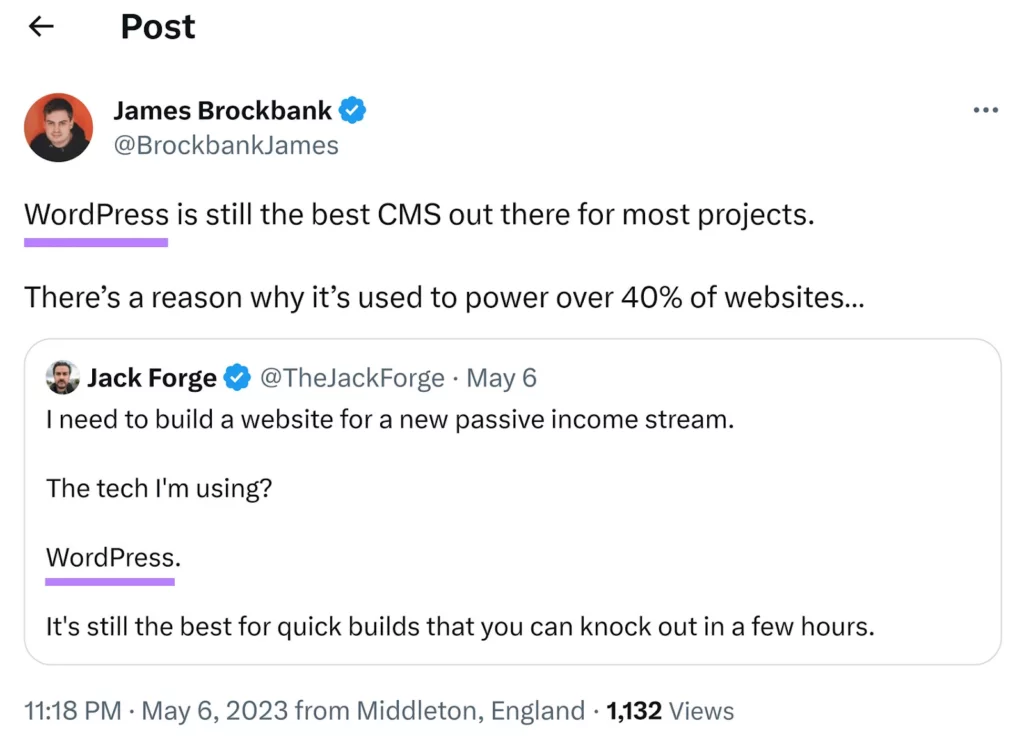
Consider a mention of “WordPress” by X, even without direct tagging. These indirect references form the concealed harmonies of brand recognition, often hidden yet reverberating through digital conversations.
Why Brand Mentions Are Significant: Brand mentions serve as illuminating threads woven into the tapestry of conversations, revealing the depth of your brand’s presence within the digital landscape. Each mention is a stitch connecting your brand to collective awareness. Beyond numbers, brand mentions offer a portal into sentiment and awareness, guiding you towards both advocates and critics.
16. Branded and Campaign Hashtags: Shining a Spotlight
Branded and campaign hashtags carve unique pathways within the labyrinth of social media. Branded hashtags, distinctive to your brand, reflect your name or philosophy, while campaign hashtags mark specific marketing endeavors. These tags are more than adornments; they are navigational markers, uniting your posts under a common umbrella, enhancing their discoverability.
Imagine the hashtag #WebflowChampions on LinkedIn, created by Webflow for a campaign. This virtual tag opens the gateway to a realm of content intricately intertwined with your brand’s narrative.
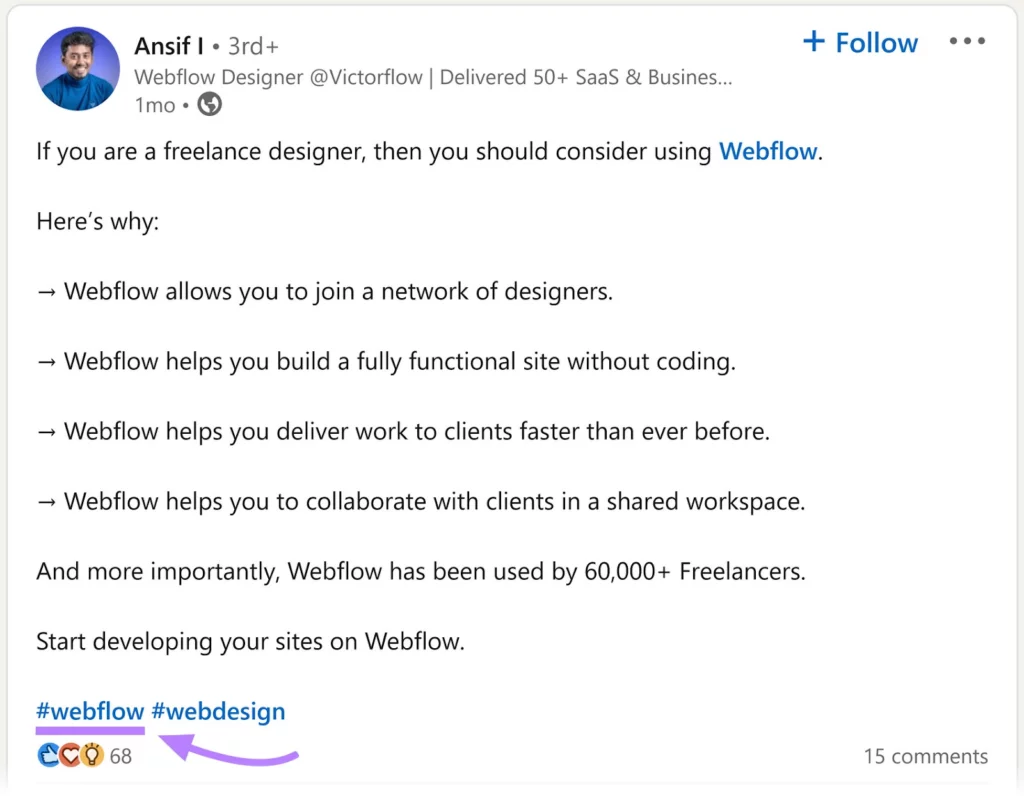
Why Branded and Campaign Hashtags Matter: The resonance of branded and campaign hashtags extends beyond fleeting trends. They amplify your visibility on the digital stage. Users clicking or searching for these tags are led to a gallery of content—the masterpiece of your brand or campaign. The spotlight on these hashtags transforms them into avenues of exploration, beckoning potential followers and bolstering engagement.
Factors to Consider Before Choosing Social Media KPIs:
- Business Objectives: Your social media KPIs should directly align with your overarching business objectives. Whether it’s increasing brand awareness, driving website traffic, boosting sales, or enhancing customer engagement, each KPI should contribute to your business’s success in a meaningful way.
- Relevance: Ensure that the KPIs you choose are relevant to your industry and the nature of your business. What works for one industry might not be applicable to another. Tailor your KPIs to match the dynamics of your niche.
- Measurability: Opt for KPIs that are quantifiable and measurable. You should be able to track and analyze these metrics consistently over time. Vague or qualitative metrics might not provide actionable insights.
- Data Availability: Consider the availability of data. Are the necessary data points accessible and reliable? Without accurate data, your KPIs won’t offer meaningful insights.
- Audience: Understand your target audience’s behavior and preferences. Your KPIs should reflect what matters to your audience and how they engage with your content.
- Stage of the Funnel: Depending on where your audience is in the sales funnel, different KPIs might be more relevant. For instance, metrics like engagement and reach are crucial for the awareness stage, while conversion metrics become essential as you move toward the decision stage.
- Resource Constraints: Take into account the resources—time, budget, and personnel—you have available for tracking and analyzing KPIs. Some metrics might require more intensive monitoring and analysis than others.
- Competitor Benchmarking: Look at what metrics your competitors are tracking. While you shouldn’t blindly follow their lead, benchmarking against competitors can provide insights into industry standards and help you identify gaps.
- Long-Term vs. Short-Term Goals: Different KPIs are suited for different time frames. Some might provide insights into immediate campaign performance, while others offer insights into long-term trends. Balance your KPIs to cover both short-term wins and long-term growth.
- Actionability: The purpose of tracking KPIs is to drive action. Choose metrics that provide insights you can act upon. If a metric doesn’t lead to actionable changes, it might not be worth tracking.
- Holistic View: Avoid tunnel vision by selecting a mix of KPIs that provide a holistic view of your social media performance. Combining metrics that measure engagement, reach, conversion, and sentiment will give you a well-rounded perspective.
Conclusion:
Consistently monitoring and meticulously analyzing these Key Performance Indicators (KPIs) will yield a wealth of invaluable insights, enabling you to methodically fine-tune your social media strategy. This strategic refinement, based on data-driven understanding, empowers you to make informed decisions that optimize your content, engagement tactics, and overall approach. By aligning your efforts with the metrics that truly matter, you position yourself to not only elevate your social media presence but also to achieve more impactful and meaningful outcomes. In essence, these KPIs serve as your compass, guiding you toward the enhancement of your brand’s online resonance and the attainment of your overarching objectives.
FAQs on Social Media KPIs:
How often should I track Social Media KPIs?
Regular monitoring is crucial. Depending on your goals and the frequency of your social media activity, you might track KPIs daily, weekly, or monthly. The key is to maintain consistency to identify trends and make timely adjustments to your strategy.
What tools can help me track Social Media KPIs?
Several social media analytics tools are available, including native platform insights (e.g., Facebook Insights, Twitter Analytics) and third-party tools (e.g., Hootsuite, Buffer, Sprout Social). These tools provide in-depth data on your social media performance, making it easier to track and analyze KPIs.
What should I do if my Social Media KPIs aren’t meeting expectations?
If your KPIs are falling short, it’s time to reassess your strategy. Analyze your content, posting schedule, and audience engagement patterns. Experiment with different approaches and tactics, and consider A/B testing to identify what resonates best with your audience.
How can I use Social Media KPIs to improve my strategy?
Regularly analyze your KPI data to identify trends, strengths, and areas for improvement. Use this information to refine your content, posting schedule, and engagement tactics. Adjust your strategy based on what the data tells you, and continuously iterate for better results.
Can Social Media KPIs help me measure ROI?
Yes, Social Media KPIs contribute to measuring ROI indirectly. By tracking metrics such as conversion rates, click-through rates, and lead generation, you can gauge how effectively your social media efforts are driving real business outcomes.



